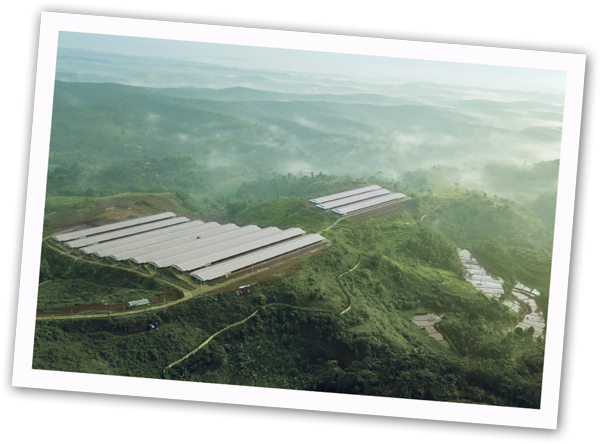



Mere days after the World Resources Institute issued new greenhouse gas (GHG) protocols, the organisation felt it important to re-post an enlightening article about agricultural emissions. The article brings clarity to issues related to deforestation and GHG emissions. To each of their points, information is added about how the Malaysian palm oil industry leads the world in environmental stewardship.
Point 1: The agricultural sector is the world’s second-largest GHG emitter.
Oil palm plantations in reality efficiently remove CO2, due in part to the extensive green foliage carried throughout their lifespan of 25-30 years. Malaysia has agreed to periodically report on its national GHG emissions and measures taken to address climate change. Among the 106 countries which reported their GHG inventories to the UN Framework Convention on Climate Change in 2000, Malaysia was ranked among the lowest GHG emitters. At the other end of the scale, the US, EU and Australia ranked among the 20 largest CO2 emitters.
Only 11 countries stood out as net carbon sinks; Malaysia was one of these. This trend will continue since Malaysia pledged to retain at least 50% of its land mass under forest and green cover as far back as 1992 at the Earth Summit. Today, it still proudly upholds this commitment. Palm oil produced sustainably will continue to be a mainstay of the Malaysian economy.
Point 2: Most farm-related emissions come in the form of methane and nitrous oxide.
Cattle belching is a top source of farm-related emissions. Livestock accounts for 71% of all agricultural land use, or 30% of land surface on the planet. The area occupied by oil palm is miniscule by comparison, just 0.31% of global agricultural land use.
Point 3: Global agricultural emissions are projected to continue increasing, driven by production of vegetable oils and animal products, in response to increased food demand.
Amidst concern over food security and available arable land to support increased food production, the oil palm’s superior productivity comes into the picture. It produces, on average, 4 tonnes of oil per ha compared to canola (0.59), sunflower (0.42) and soybean (0.36). Each oil palm tree also produces fruit for up to 30 years, enabling plantations to also sustain a healthy secondary fauna and flora ecology.

Point 4: Most land-use emissions are connected to agriculture, many resulting from deforestation as farms expand into tropical forests.
Around the world, oil palm is grown on the least amount of land area among the four major oil crops. Between 2010 and 2015, four times more land were cleared to plant soybean than oil palm.
The oil palm is a big perennial tree which grows and bears fruit throughout the year. Soybean, canola, rapeseed and sunflower remain on the ground for a few months – they flower and fruit before they are harvested. Within a short duration, they are then uprooted or left to decay in the field. If a situation arises similar to the debate on banning palm oil biofuels in Europe, then industry would need to substitute with less efficient oil crops such as soybean, canola and sunflower. Large areas of forest and grassland are likely to be destroyed to plant these crops.
Here is another example of Malaysia’s progressive environmental policies. The palm oil milling process creates a waste by-product called palm oil mill effluent. This holds a high concentration of biodegradable organic material. It is, by law, ponded in effluent treatment tanks, where it is decomposed to meet strict environmental standards. The breakdown creates potent methane biogas (GHG) that can harm the environment.
Many Malaysian palm oil mills now have in place systems to trap and recycle that biogas. Such methane trapping facilities are projected to be made mandatory. The country will build biogas facilities across all mills and educate millers on how to recycle the gas, which is a ready and useful source of energy. It is already used to generate green electricity is some parts of the country.
Point 5: To manage GHG emissions, farmers need to understand their emissions sources.
Malaysian oil palm cultivation and palm oil processing are already more environmentally friendly than most other major oilseed crops. The cultivation and processing of oil palm requires less input of fertilisers, pesticides and fuel energy to produce one tonne of oil.
Palm oil is the world’s most produced, affordable and consumed edible oil. And it is in fact the leading edible oil that is certified sustainable by a number of independent schemes and standards. It is enjoyed by more than three billion people in 160 countries. As the world’s population increases, Malaysia is poised to help meet the growing demand for this staple dietary macronutrient.

Malaysia’s palm oil industry is also always open to greater intergovernmental collaboration and cooperation with NGOs and industry end users, to work toward common goals of sustainability.
Datuk Dr Kalyana Sundram,
CEO, MPOC